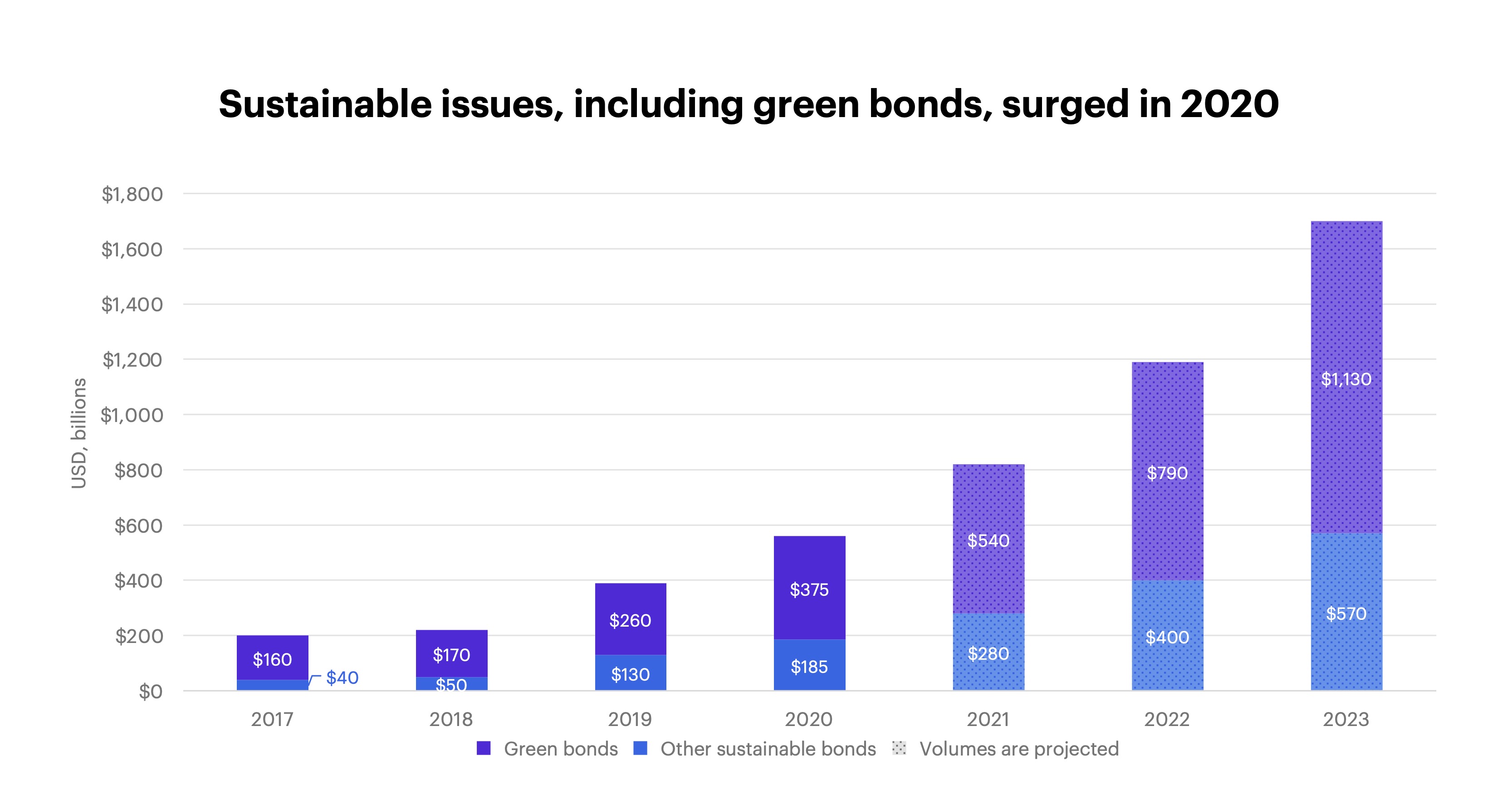Green bond basics: What to know before investing
Morgan Stanley Investment Management
09/17/21Summary: Green bonds give fixed income investors a way to incorporate environmental and social causes into their portfolio strategies. We dig into what green bonds are, how they’ve started to gain traction, and what to consider before investing.
Green bonds are part of the universe of “sustainable bonds,” which are debt instruments where the issuer has committed to financing certain environmental or social objectives. Similar to traditional bonds issued by private corporations, local and state agencies, or countries (as sovereign bonds), an investor in a green bond receives regular interest payments over a specific timeframe. When the bond reaches its maturity date, assuming that the issuer does not default, the investor receives the principal value of the original investment.
Green bonds refer to how the proceeds will be allocated by the issuer, from meeting specific environmental goals to helping companies transition to greener outcomes. Generally, green bond financing falls into the following categories:
- Green projects: Proceeds used for projects like renewable energy, water purification, or electric cars.
- Solution providers: General obligation bonds from corporate issuers that get most of their revenue from clean or environmentally beneficial technology, products, or services.
Green bonds on the rise
The market for sustainable bonds has grown dramatically in recent years, with total all-time issuance now well in excess of $1 trillion1 across a broad range of issuer sectors and geographies. This rapid growth has not been without its critics, who question the integrity of some issuances that have come to market, accusing them of “greenwashing” — that is, providing false or misleading information about their environmental attributes.
To counter potential greenwashing, investors can critically assess the quality, objectives, and impact of sustainable bond issuances, and monitor them over time. After all, the objective is to finance positive environmental and social impacts that contribute to long-lasting outcomes. Transparency from issuers on how proceeds are used and timely disclosures of the impacts achieved are therefore essential.
As a subset of sustainable bonds, green bond issuance has also increased and is now the largest component of sustainable issuance, according to the Climate Bonds Initiative (CBI). CBI reports green bond issuance of $375 billion in 2020, with strong projected future growth.

Sources: Climate Bonds Initiative (CBI) and DZ Bank, December 2020
Morgan Stanley expects sustainable bond issuance will continue to increase, playing a significant role in mobilizing capital to support decarbonization and sustainable development goals. Governments, policy makers and regulators push this agenda through fiscal stimulus packages and financing plans that include green and social features.
In the US, the Federal Reserve has moved toward calling for banks to monitor and address risks associated with climate change, which it dubbed “systemic.” Meanwhile, the Biden Administration has indicated its support for “effective carbon pricing,” which incentivizes low- or no-carbon substitutes for fossil fuels.
In Europe, the European Climate Pact resulted in many countries pledging to achieve net zero emissions. A large part of these countries’ investments will be funded by green bonds.
These are just a few of many large-scale examples of how governments have been ramping up environmental initiatives and generating more interest in green bonds.
What to consider before investing
Recently, more research has been dedicated to studying the potential of environmental, social and governance (ESG) factors to enhance fixed income performance. As with any investment, however, there are risks to consider. While the green bond market is growing, it is still nascent and can be less liquid than other markets. The lack of clear definitions can also prove challenging, since investors may not be able to easily identify how their investment is used.
Some investors may consider an actively managed mutual fund that can provide them with clarity on how the sustainable bond holdings in their portfolios are helping to catalyze meaningful positive change. Another potential approach is a core-satellite strategy, where a portion of an investor’s portfolio is allocated to sustainable assets.
Of course, investors should make sure that any decisions reflect their individual goals, timelines and risk tolerance. If those boxes are checked, we believe aligning investments with personal values is a solid next step.
- “Sustainable Debt Joins the Trillion-Dollar Club,” Bloomberg NEF, October 17, 2019.
How can E*TRADE help?
Need help getting started with bonds?
To get started with bonds, visit our comprehensive Bond Resource Center. Use our Advanced Screener to quickly find the right bonds for you. Or call our Fixed Income Specialists at (877-355-3237) if you need additional help.
Brokerage account
Investing and trading account
Buy and sell stocks, ETFs, mutual funds, options, bonds, and more.